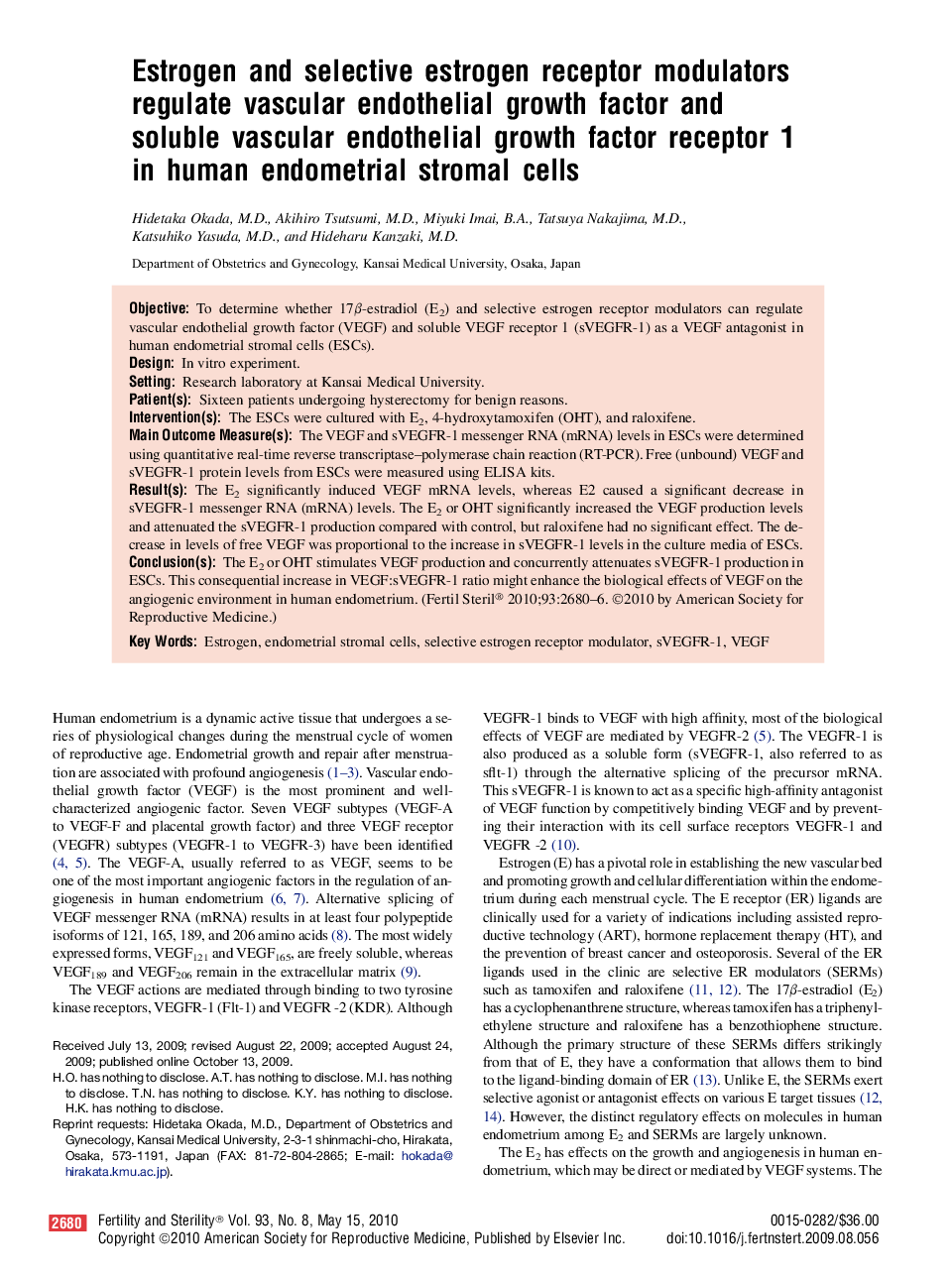| Article ID | Journal | Published Year | Pages | File Type |
|---|---|---|---|---|
| 3939688 | Fertility and Sterility | 2010 | 7 Pages |
ObjectiveTo determine whether 17β-estradiol (E2) and selective estrogen receptor modulators can regulate vascular endothelial growth factor (VEGF) and soluble VEGF receptor 1 (sVEGFR-1) as a VEGF antagonist in human endometrial stromal cells (ESCs).DesignIn vitro experiment.SettingResearch laboratory at Kansai Medical University.Patient(s)Sixteen patients undergoing hysterectomy for benign reasons.Intervention(s)The ESCs were cultured with E2, 4-hydroxytamoxifen (OHT), and raloxifene.Main Outcome Measure(s)The VEGF and sVEGFR-1 messenger RNA (mRNA) levels in ESCs were determined using quantitative real-time reverse transcriptase–polymerase chain reaction (RT-PCR). Free (unbound) VEGF and sVEGFR-1 protein levels from ESCs were measured using ELISA kits.Result(s)The E2 significantly induced VEGF mRNA levels, whereas E2 caused a significant decrease in sVEGFR-1 messenger RNA (mRNA) levels. The E2 or OHT significantly increased the VEGF production levels and attenuated the sVEGFR-1 production compared with control, but raloxifene had no significant effect. The decrease in levels of free VEGF was proportional to the increase in sVEGFR-1 levels in the culture media of ESCs.Conclusion(s)The E2 or OHT stimulates VEGF production and concurrently attenuates sVEGFR-1 production in ESCs. This consequential increase in VEGF:sVEGFR-1 ratio might enhance the biological effects of VEGF on the angiogenic environment in human endometrium.
